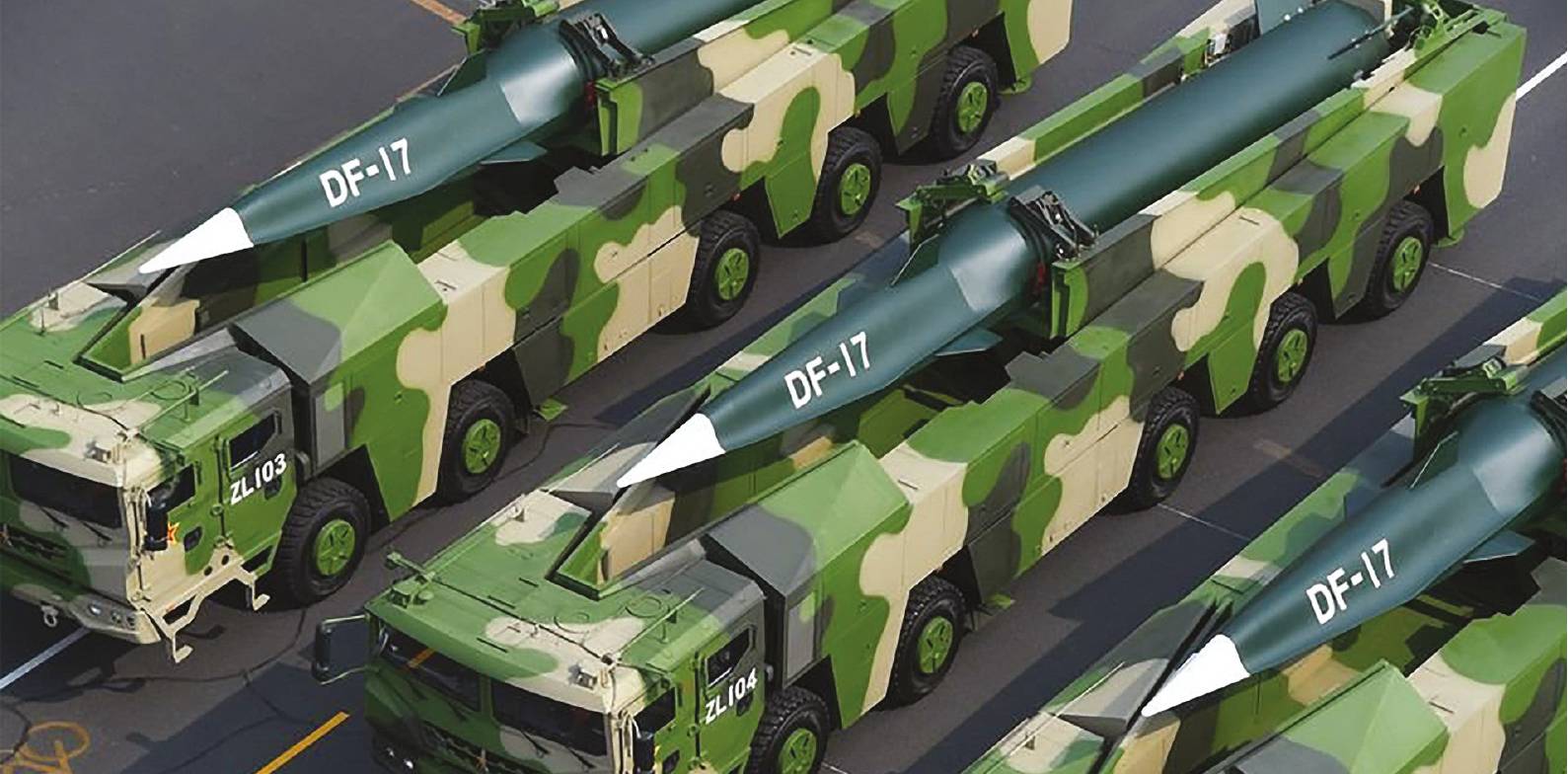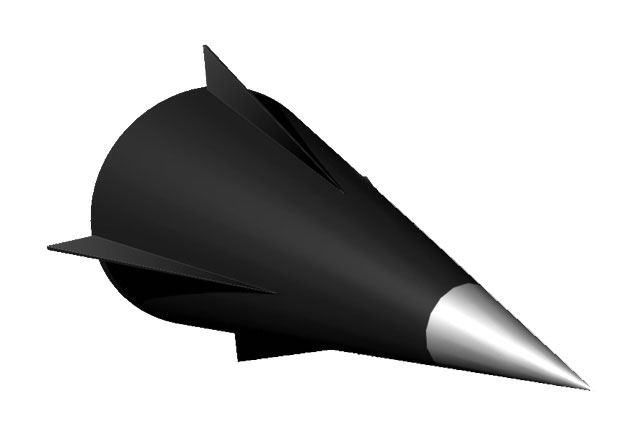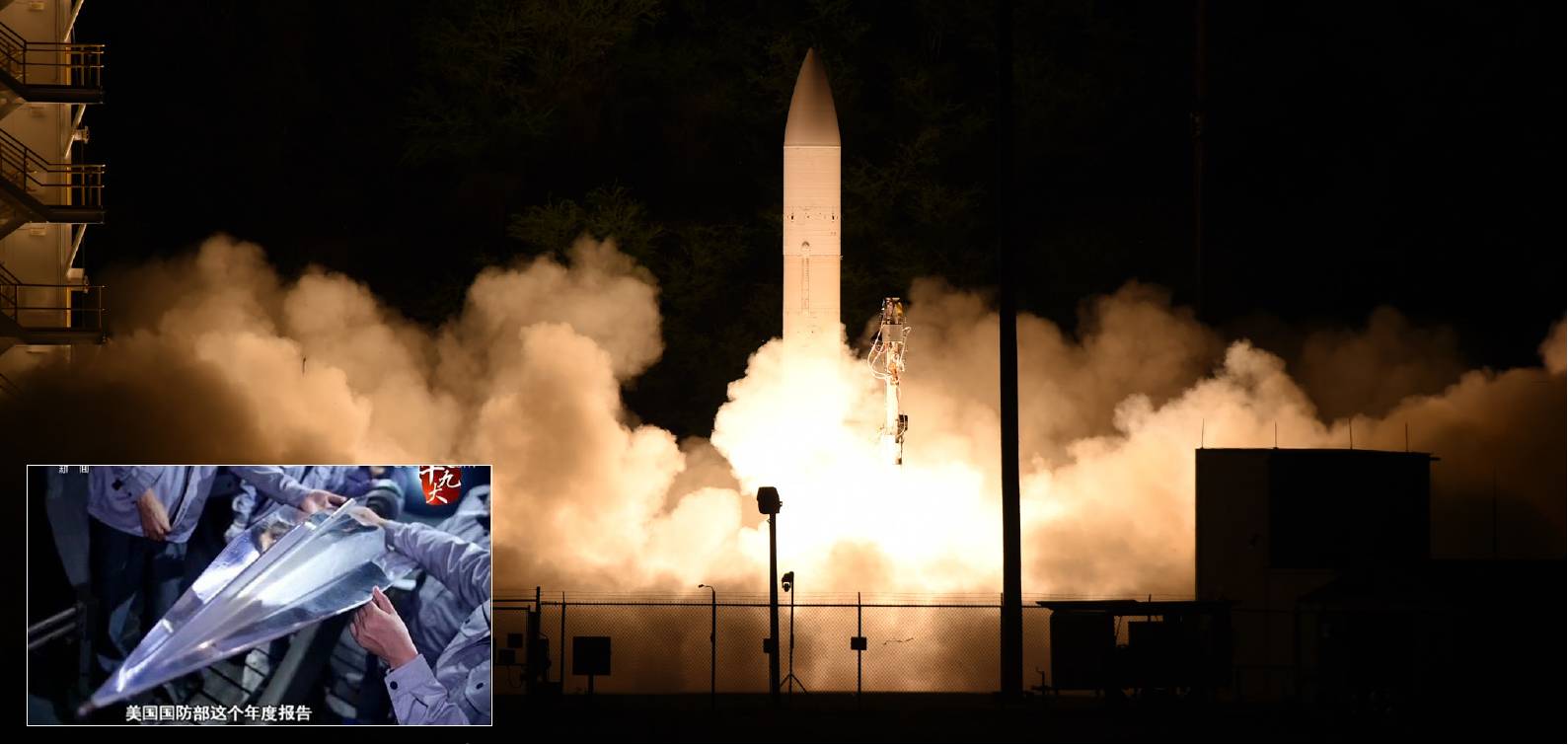DEFENCE Hypersonic glide vehicles
Fast forward to the hypersonic age
Hypersonic and space technology expert Dr MALCOLM CLAUS, Kingston University and member of the RAeS Weapon Systems & Technology Group analyses the technical and operational challenges associated with hypersonic glide vehicles (HGVs). Should the recent hypersonic test flights conducted by China be a wake-up call for the West?
 Chinese DF-17 missiles on parade in Beijing. Xinhua
Chinese DF-17 missiles on parade in Beijing. Xinhua
Interest in hypersonics has increased over the last ten to fifteen years with several countries undertaking projects which have resulted in the manufacture and testing of flight hardware.
Several projects are being actively pursued by the US, Russia, China and India. These projects cover several mission types but have mainly focused on two specific applications – either being access to space (spaceplanes) or projects which have military applications. Hypersonics from a military perspective consists of either developing a hypersonic cruise missile or a hypersonic glide vehicle (HGV).
The hypersonics race between the US and China has gathered pace after the latest test flight conducted by the Chinese. This test flight, reported in mid-October and widely discussed online, indicated that a successful flight was achieved demonstrating the ability to launch a vehicle which re-entered the atmosphere and was then able to glide for a considerable distance before landing. If correct, this flight demonstrates China’s increasing hypersonic capabilities. Very little specific information on the vehicle used for these tests has been made available and, if correct, it illustrates the rapid growth and output from the Chinese hypersonic programme.
 WU-14 Hypersonic Glide Vehicle
WU-14 Hypersonic Glide Vehicle
While China has developed and put into service a glide vehicle, this system the DF-17 is a medium-range ballistic missile (MRBM) which is used to boost a glide vehicle (DF-ZF) element. The recent Chinese test flight demonstrated a glide vehicle which has a longer glide range than the DF-17/DF-ZF combination and the ability to glide at a higher Mach number. This new glide vehicle provides a strategic capability, especially when combined with an ICBM (intercontinental ballistic missile).
Several HGV projects have been actively pursued with varying outcomes. China is the third country which has been trying to develop this capability.
Both the US and Russia have conducted test flights of HGVs and, in the case of Russia, ‘deployed’ a strategic HGV known as ‘Avangard’ which was first demonstrated in 2018. The US HGV effort focused on the US Hypersonic Technology Vehicle 2 (HTV-2), launched in 2010 and 2011. However, both tests ended with the loss of the HGV after nine minutes of flight, clearly showing that these vehicles require several technical challenges to be overcome (these are discussed below). For the purposes of discussion, a tactical system is defined as a glide vehicle which operates (within the glide portion of its trajectory) between Mach 5 to 10, while a strategic vehicle would operate at Mach 20.
There are a number of technical challenges associated with hypersonic flight which need to be overcome in order to produce a usable HGV. The challenges faced by the designer of an HGV include the limitations and constraints imposed by the boost vehicle or launcher which will influence the vehicle’s final configuration in terms of its size, volume, and mass.
A glide vehicle is initially placed onto a ballistic trajectory using a boost vehicle. At a predetermined point along its trajectory the HGV would separate from the boost vehicle and would then begin to re-enter, and at a given altitude, the vehicle would execute a pull-up manoeuvre. This would enable the vehicle to transition into a stable (equilibrium) flight path (glide) within the upper atmosphere.
The first technical challenge is to determine a suitable configuration for the HGV which would be able to perform the initial aerodynamic manoeuvres at the start of the glide phase but also be able to maintain its glide while travelling at high Mach numbers within the atmosphere. This, in the first instance, would require a configuration which is able to generate a sufficient lift to drag (L/D) ratio (for a hypersonic vehicle a L/D ratio of 3 is considered good: the HTV-2 achieved a L/D ratio of 2.6).
 The Boeing X-37B reusable robotic spacecraft, also known as the Orbital Test Vehicle, may be similar to a spaceplane developed by China. USAF
The Boeing X-37B reusable robotic spacecraft, also known as the Orbital Test Vehicle, may be similar to a spaceplane developed by China. USAF
Overcoming the vehicle’s drag and being able to produce a usable design is no mean achievement. The L/D ratio would influence the maximum glide range and can help reduce the vehicle’s heat load experienced during flight. However, both of these design characteristics are subject to the altitude the glide is to be performed at and flight velocities. This is, from a vehicle design perspective, an important trade-off.
An example configuration for this type of vehicle would be a wedge-like blended-wing body (BWB) design, generically referred to as a ‘waverider’. However, this configuration does have a low volume efficiency (this is the relationship between the size of the vehicle and the usable internal volume) that is common with these configurations. A system using this design would require careful and considered integration of the payload and associated subsystems. The selected configuration would need to be able to handle the high flight loads imposed on the airframe, the ability to overcome the aerodynamic, aerothermal and flow phenomenon encountered during the glide phase of its trajectory.
The flight environment places a big emphasis on the selection of suitable materials which could be used in the construction of the aeroshell of an HGV. These materials would need to have good thermal and structural properties, they must be lightweight and not deform or warp due to high heating rates or heating loads.
A conventional re-entry vehicle travelling on a ballistic trajectory would be subjected to high temperatures for a ‘relatively’ short duration. An HGV would be subjected to lower temperatures but over a much longer duration. It is this additional ‘soak time’ which requires the careful selection of the materials used in the construction of the aeroshell.
These materials would need to be exotic or advanced forms of composite materials and could include either ceramic-metal composites (CMCs), metal matrix composites (MMCs) or ultra-high-temperature ceramics (UHTCs). These would provide the means to produce a heat shield that could operate at temperatures up to 3,373K (3,000°C). Example materials include hafnium diboride (HfB2) and zirconium diboride (ZrB2). These advanced materials would be especially needed for features, such as leading edges with small radius of curvature, like a control surface(s). The selected material or combination of materials would form part of the thermal protection system needed to protect the secondary structure of the vehicle and its payload. An example of flight failure of an HGV due to structural degradation was the second flight of the HTV-2, which resulted in its loss due to aerodynamic instabilities caused by the break-up of the structure.
One of the benefits of using an HGV is its ability to manoeuvre within the atmosphere both vertically (altitude) and laterally (cross-range) during its glide. However, the next issue from a technical viewpoint is that of flight control. The final choice would be a trade-off between the flight trajectory (altitude and Mach No.) and the configuration of the vehicle (any imposed constraints associated with the booster and the usable internal volume). Two potential solutions are available to the designer: (1) incorporation of divert thrusters (provided that there is sufficient space – this would require propellants, storage tanks and a fuel system to be included within the vehicle) to provide directional control and (2) conventional control surfaces (rear-mounted body flap, for example). However, these would need to be correctly sized to provide enough control authority for performing any lateral or vertical manoeuvres.
 An image of an HGV broadcast by Chinese state media in October 2017 (inset); US common hypersonic glide body (C-HGB) launches from Pacific Missile Range Facility, Kauai, Hawaii (main). United States Navy
An image of an HGV broadcast by Chinese state media in October 2017 (inset); US common hypersonic glide body (C-HGB) launches from Pacific Missile Range Facility, Kauai, Hawaii (main). United States Navy
The next challenge is the flight environment the vehicle would experience during its glide trajectory. High Mach number flight (M >10) within the atmosphere results in the formation of a plasma sheath (ionised gas created by the high temperatures generated by the vehicle’s flight). This also poses both design and operational challenges.
From a design perspective this feeds back into the material selection for both the main aeroshell and the control surfaces. The heating levels near the surface of the vehicle would be of particular interest. The formation of a plasma sheath around the whole HGV can be used to a positive effect – through the application of magnetohydrodynamics (MHD). The use of MHD on such a vehicle would provide a means to adjust or control the forces acting on the vehicle in flight. Applying MHD would improve the effectiveness of the control surfaces, potentially providing additional manoeuvrability.
